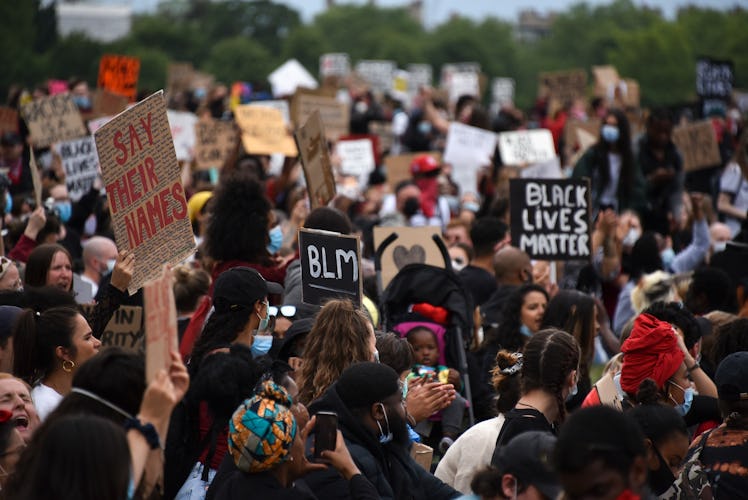
You Can Donate Directly To Communities In Need With Grassroots Mutual Aid Funds
After the recent killings of George Floyd, Breonna Taylor, and Tony McDade at the hands of police officers, as well as the extrajudicial killing of Ahmaud Arbery, people have been showing their solidarity with the Black Lives Matter movement by protesting against systemic racism and police brutality, in addition to donating their time and money. With many different organizations accepting donations, it's tough to know where to put your money. Many activists have been promoting mutual aid funds, but if you're unfamiliar, you might be wondering what a mutual aid fund is, and how it works. Here's how you can work with others in your community to help those who need it the most right now.
The mass protests that swept the country the weekend of May 30 also led to an outpouring of support in the form of donations to organizations helping protesters and Black communities. According to The New York Times, donations came pouring in to organizations like ActBlue, which funds a number of progressive causes including Progressives Everywhere Bail Fund. Meanwhile, Twitter users harnessed the power of social media to raise millions to fund bail money for the protesters all around the United States. In fact, as of June 2, a number of bail funds, like the Minnesota Freedom Fund, are no longer accepting donations, thanks to the outpouring of support.
With some bail funds diverting donations, you can look for mutual aid funds, which fund grassroots efforts to provide resources, financial and otherwise, at the community level. The idea behind a mutual aid fund is that members prioritize the needs of the individuals of the community — such as rent, medical bills, cash bail — and allocate the donations to address the highest need first. Community members share their needs with each other and all contribute, either through money, material goods, or services. By donating to a mutual aid fund, you can pitch in to help communities dealing with structural violence and inadequate resources, which in turn can make communities more vulnerable to direct, or active, violence.
Unlike donating to bigger organizations or government-run groups, which can move slowly or use a portion of the funds for administration and other expenses, giving money to a grassroots mutual aid fund — many of which are accessible in shared Google Docs — is a more direct approach to get your donation to individuals in need in the most efficient way possible. In many cases, you provide your contact information as well as information for apps like Cash App, Venmo, or Paypal.
On Monday, June 1, Twitter user Lydia Mason shared a Twitter thread with a list of mutual aid funds accepting donations. Mason notes the need for mutual aid funds is especially great in the midst of the coronavirus pandemic. Prior to the protests, many mutual aid funds were being used — and still are — to help provide necessities like medications and groceries to individuals who couldn't access them during quarantine.
With the renewed rise of Black Lives Matter protests, which police and other authorities have continued to escalate, mutual aid funds are also providing relief like cash bail for protesters who have been arrested. You can donate to mutual aid funds through GoFundMe accounts and their specific websites. There are a number of mutual aid fund spreadsheets making the rounds on social media, so take a look and donate to a cause that speaks to you. Some prominent funds that have been circulating include NYC Black Mutual Aid, Public Goods, East of the River Mutual Aid Fund, and Metro Atlanta Mutual Aid Fund.
Whether you're looking to support specific Black businesses, families who are struggling financially with medical expenses or bail money, or provide longterm relief to homeless Black youth, mutual aid funds are a great option to consider if you want to put your money toward direct action.